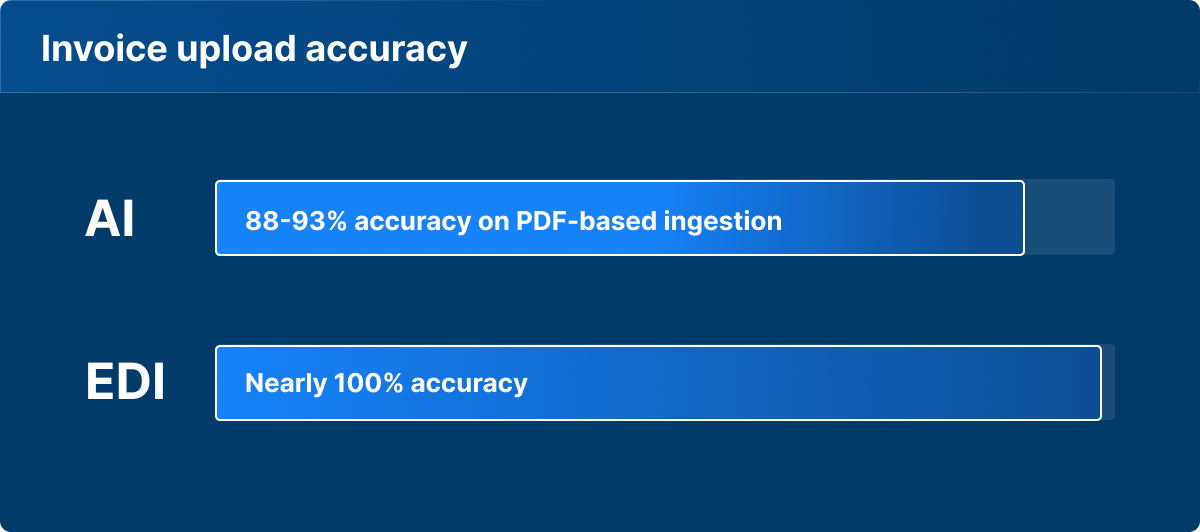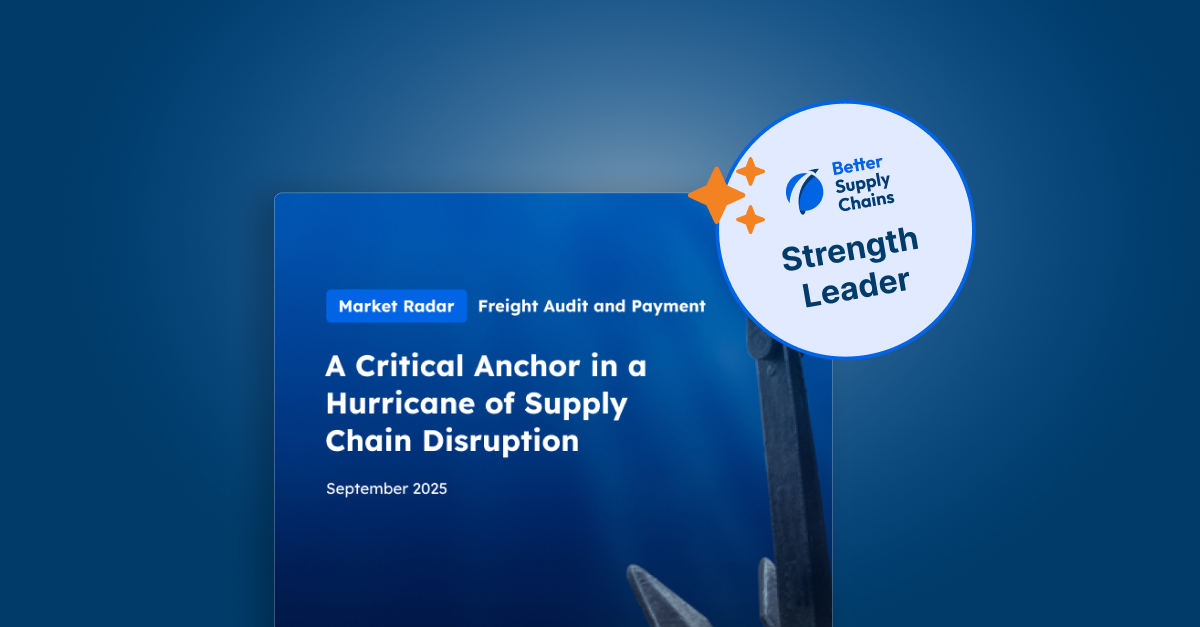EDI vs. AI: The results are in!

Previously published on LinkedIn by CEO, Hannah Testani
In transportation and logistics, there are only a few ways data actually moves from carriers to the companies that depend on it. For decades, EDI (Electronic Data Interchange) has been the gold standard. It’s structured, standardized, and designed for system-to-system communication.
Recently, though, a new idea has captured the industry’s attention: using AI to extract invoice data directly from PDFs. With all the excitement around generative AI and large language models, it’s understandable that people are asking whether AI can replace EDI for invoice ingestion altogether.
At Intelligent Audit, we decided to answer that question with real data.
After more than two years of R&D on our InvoiceAI product, designed specifically to use AI/LLMs to ingest invoice information from PDFs, we can say with confidence EDI remains substantially more accurate, complete, and reliable than AI-based PDF ingestion.
Why EDI Has Remained the Benchmark
EDI may not be flashy, but it works for one simple reason: Carriers can directly map their internal data fields into EDI files.
That means:
- Access to more data, not found on a PDF
- More complete data
- More structured formats
- More consistent mapping
- Fewer downstream errors
For companies like ours, accuracy is everything. We don’t win by simply uploading invoices into a system, we win when we can:
- Fully cost-allocate every shipment,
- Run a complete audit without missing charges or context, and
- Get carriers paid quickly and correctly.
Where AI Falls Short Today
AI is powerful, but it’s constrained by the limitations of PDF invoices. PDFs simply don’t carry the depth or structure of data that an EDI file can provide. When you factor in the complexity of carrier rating models, cost allocation logic, and the critical data points required for automated coding, the information available on a PDF just isn’t enough. PDF invoices were built for standard, straightforward billing, vanilla customers. But enterprise shippers have layered on intricate allocation rules and contractual audit requirements that demand far richer data than a PDF can deliver.
Even with advanced AI models and best-in-class extraction techniques, PDFs lack the necessary information to properly cost allocate and freight audit invoices.

Where AI Does Still Add Value
Even though AI is not yet a full replacement for EDI, it is extremely helpful as a speed-to-value tool.
AI allows us to:
- Onboard new carriers the same day we receive their PDFs
- Start auditing immediately
- Provide a temporary, fast-start ingestion method
We see AI not as an alternative to EDI, but as a strategic stopgap that helps us move faster while more reliable data pipelines are established.
IA's Position: AI Enhances the Workflow, EDI Powers the Foundation
At Intelligent Audit, we will continue to invest in AI because it enables rapid onboarding and reduces friction for carriers. But when it comes to depth, accuracy, completeness, and true auditability, EDI remains unmatched.
And the best results come from using both intelligently, leveraging AI for speed while relying on EDI for long-term, high-accuracy data ingestion.



